Making sure your child's cognitive development is on track is especially important during kindergarten. The gifted and talented program is one of the finest ways to make certain that your child is ready for the upcoming school year.
Your child can prepare for the exam by practicing questions from the verbal, quantitative, and nonverbal batteries on the Gifted CogAT Test Prep. We'll talk about the kindergarten nonverbal battery in this blog.
CogAT nonverbal battery is used to assess executive functioning skills, such as problem-solving, critical thinking, and future planning. CogAT nonverbal sample questions typically involve a variety of visual and picture-based tasks. Examples include matching pictures or shapes, completing patterns, and arranging them in order of size.
As mentioned above, the CogAT nonverbal test questions consist of mainly visual tasks and don't involve reading. Figure matrices, paper folding, and figure classification are the three areas in the nonverbal battery. The sum of the CogAT nonverbal score is determined by these three sections.
Figure classification
Your young one will need to choose the right group of figures that have a particular characteristic in common. For example, he/she may be asked to name the collection of figures that are all quadrilaterals or the figure that best sums up the similarity.
Another scenario would be asking to locate the gap in a pattern or to solve a visual puzzle. Nonverbal questions are used to gauge your child's capacity for original thought and problem-solving.
Paper folding
Your kid is required to predict what will happen to a sheet of paper that has been folded, sliced, or hole-punched, then unfolded. This section evaluates your child's visual perception skills as well as their ability to spot patterns, distinguish similarities and differences, and create mental images.
Additionally, it assesses the capacity for inference and decision-making based on the visual information provided. Last but not least, it measures how logical your child is.
The CogAT paper folding section's questions assist the little one build his/her attention to detail, capacity for pattern recognition, as well as concentration and focus levels. Additionally, it will help him or her express more freely and improve the capacity for abstract thought.
Figure matrices
Your youngster will be asked to identify the missing components of a figure matrix and then choose the missing item rationally from a choice of options in this section. This section is designed to gauge your child's capacity for abstract thought and comprehension of complex relationships.
The Gifted Test Prep offers support in grasping the exam format and the kind of questions one would encounter on test day.
Overall, the CogAT nonverbal sample questions can provide an excellent way to assess kindergarten readiness and help identify any areas of cognitive weakness that may need to be addressed.
For CogAT sample questions, click here
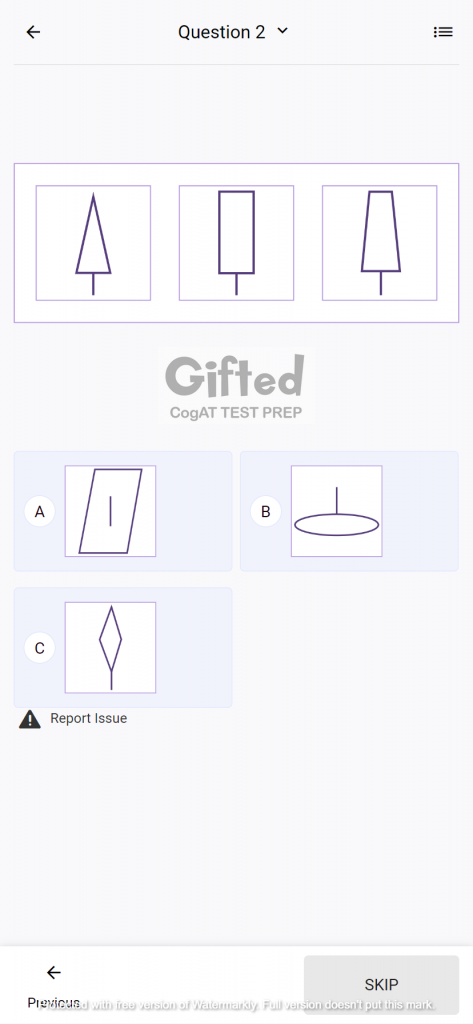
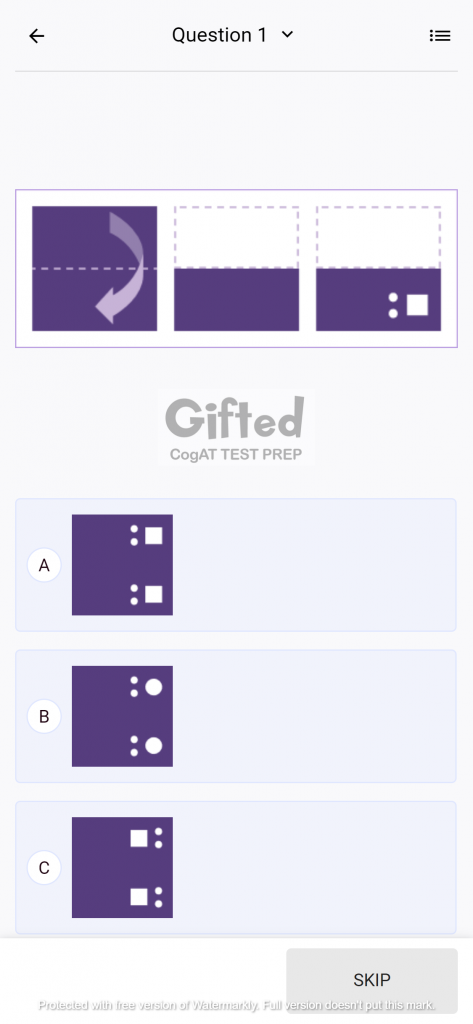
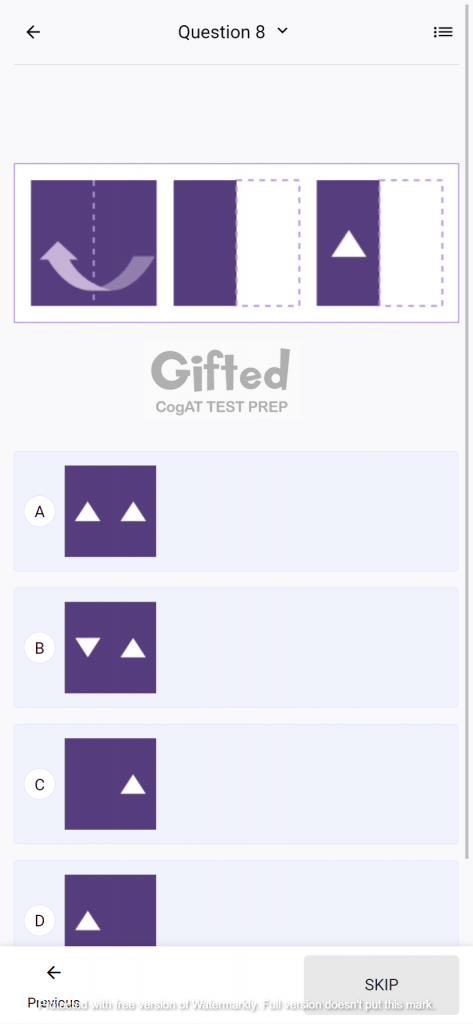

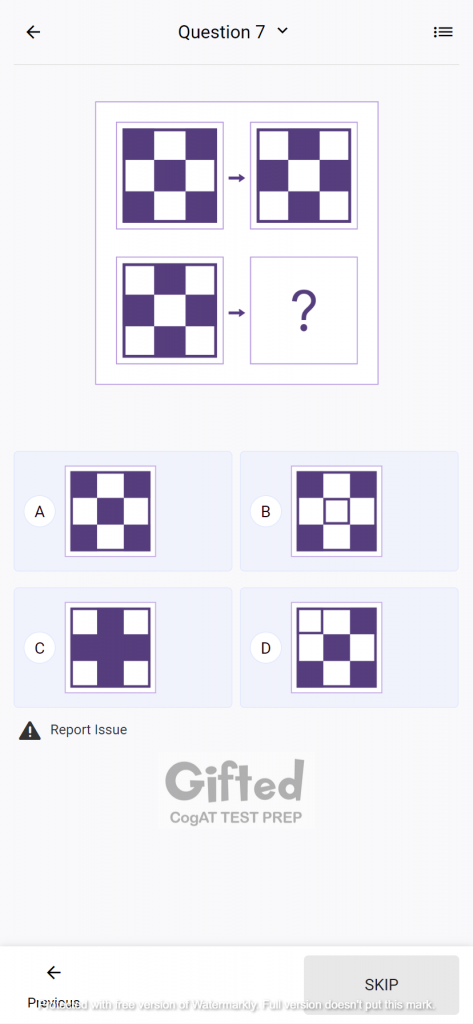
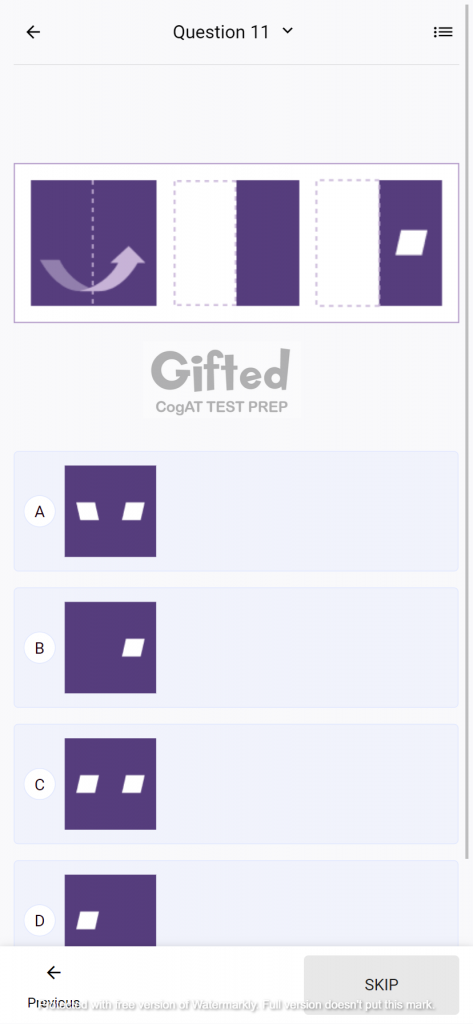
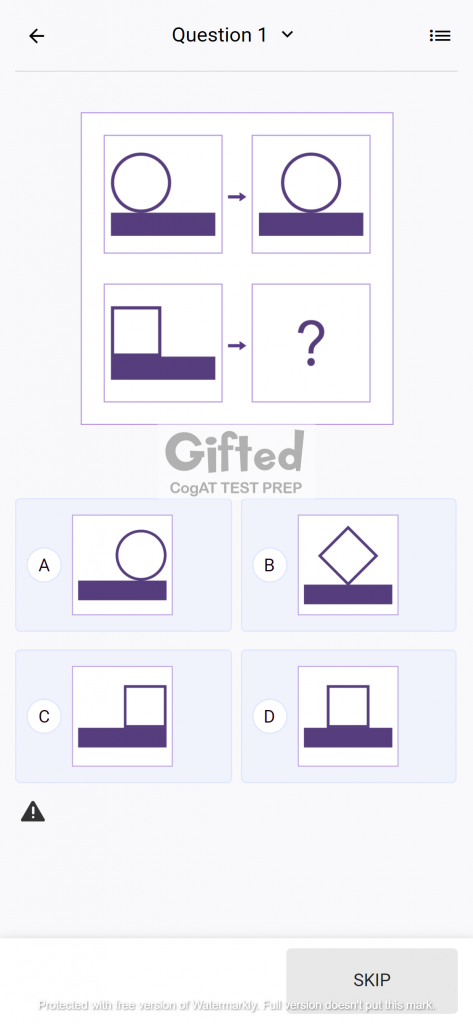
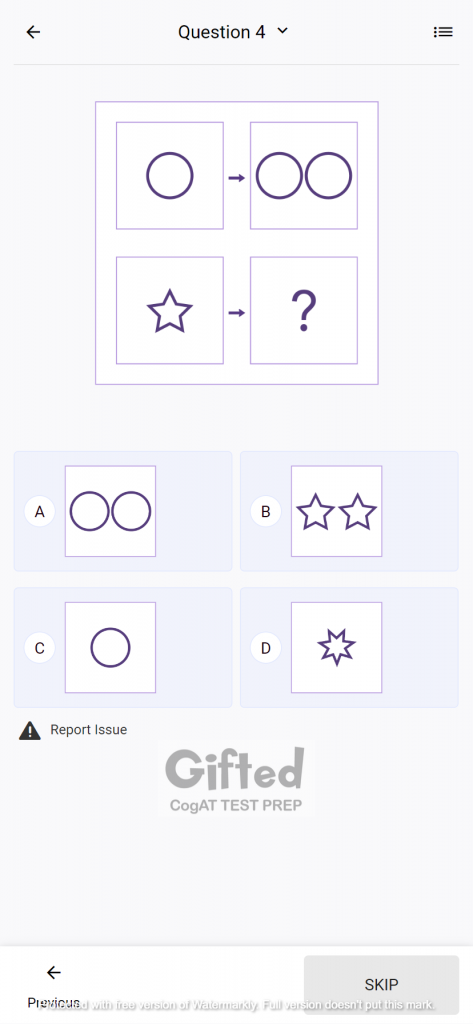
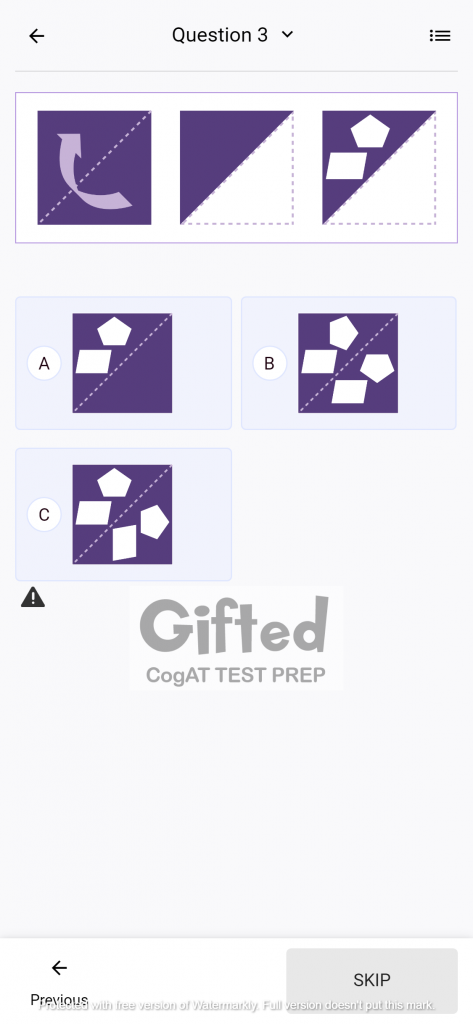
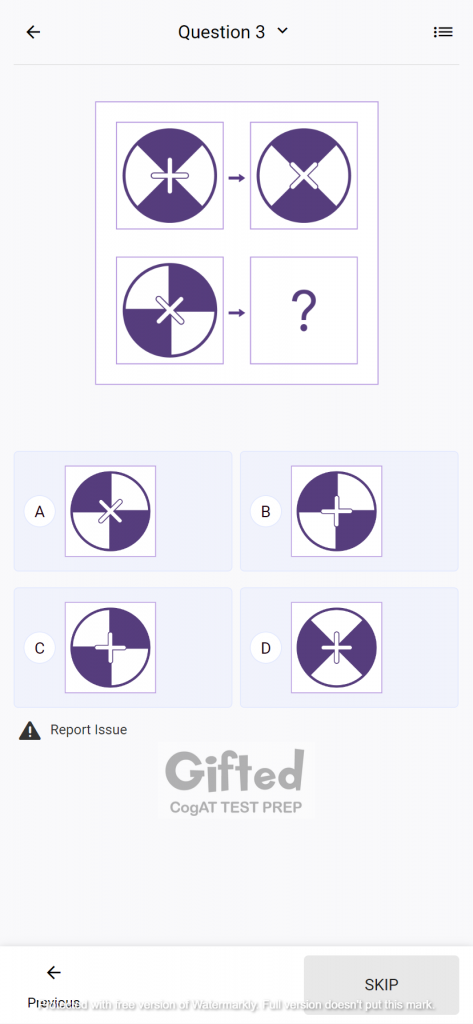

For more detailed explanations, click here
Over 35000 questions are included from the verbal, nonverbal, and quantitative batteries on Gifted CogAT Test Prep. This will assist your child in practicing and identifying his or her areas of strengths and weaknesses.
Go through the questions from all three batteries as much as possible, this will keep your beloved one step ahead of their peers during the CogAT, OLSAT or CCAT test.
Cognitive Abilities Test™ (CogAT®) is a registered trademark of Riverside Assessments, LLC and its affiliates (“Riverside”). Riverside does not sponsor or endorse any Gifted.achieve.ai products or programs, nor has this gifted.achieve.ai product or program been reviewed, certified, or approved by Riverside. The questions used by gifted.achieve.ai are Gifted.achieve.ai’s own materials, created based on publicly available information, and in no way do they correspond to actual CogAT® testing materials. Gifted.achieve.ai uses practice materials only; not actual test questions. Trademarks referring to Riverside are used for nominative purposes only and such trademarks are solely the property of their respective owner.
